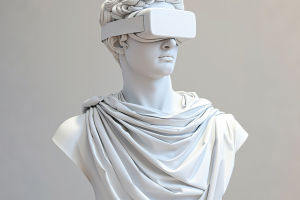Lykkers, when was the last time you truly studied a comic page? Beyond capes and speech bubbles lies a visual symphony. These aren’t just books; they’re dynamic blueprints for creative innovation.
Artists merge vivid illustrations with layered storytelling, crafting worlds where every line and color choice pulses with intention.
Through skillfully arranged panels and diverse art styles, comics convey emotions and stories in ways that resonate deeply with their audience. Indeed, these colorful pages invite readers to explore a world where creativity knows no bounds. Forget "just for kids"—comics are university-level art classes disguised as entertainment.
Storytelling Alchemy
Comics wield a unique visual grammar. Masters like Will Eisner turned panels into emotional conduits. Through meticulous sequencing, they control pacing like film directors—zooming in on a trembling hand or pulling back to reveal devastating aftermaths. The silent panels in Maus convey trauma more powerfully than paragraphs ever could.
Surrealism’s Shockwave
Jim Steranko didn’t just draw comics; he rewrote their DNA. Fusing dreamscapes with pop culture, his pages crackled with electric innovation. Characters fractured like broken mirrors; cities bent under impossible perspectives. His use of chemical color washes made each page a liquid symphony of light and shadow.
Geometry of Drama
Jae Lee’s genius lies in architectural elegance. He builds scenes using sacred geometry. In key moments, heroes clash within triangular frameworks. Lee’s command of negative space turns shadows into storytelling tools—a villain’s silhouette looming large implies menace without a single detail.
Painted Legends
Alex Ross didn’t illustrate heroes—he brought myths to life. Using classical painting techniques, his Superman glows with realism and power. He layers paint to create skin that shines and fabric that moves with weight. His works are not just read—they're experienced.
Escher’s Grip
Comics like Injustice: Gods Among Us trap readers in mind-bending labyrinths. Gotham’s alleys twist like Escher’s staircases. One panel shows Superman amid fractal clouds—each wisp hiding symbols. Backgrounds hide clever visual cues: a wall shaped like Joker’s grin, rain forming tear tracks on stone.
Minimalism’s Punch
Frank Miller wields absence like a master. His noir worlds thrive on brutal simplicity: white knives in black shadows, a red dress in a grey alley. His characters are defined by silhouette alone. This minimalist approach delivers raw emotion without distraction.
Typography’s Voice
Comics use text as part of their design. A breeze might ripple through wavy, drifting letters, while a whisper curls in thin lines. Todd Klein and others turn letters into rhythm—blasts in bold caps, murmurs in fading curves. Typography isn’t just seen, it’s felt.
Color Psychology
Palettes shape mood. Bright neons match youthful energy, while sepia tones suggest decay and age. Colorists like Matt Hollingsworth shift hues with emotion—greens for despair, reds for fury. They don’t just fill space; they guide feeling.
Image’s Rebellion
Image Comics broke the mold. Chrome covers, desaturated drama, and ornate borders defined their style. Artists used the whole page like a playground: collages, dissolving panels, and visual surprises pushed boundaries of comic layout.
Your Creative Spark
Next time you open a comic, Lykkers, look deeper. Notice how chaos, geometry, and shadows solve visual problems. These pages teach composition, color control, and storytelling economy. Sketch a panel, mimic a layout, invent your own.
So, for those seeking a spark of inspiration, delving into a comic book is an adventure worth taking. Unlocking this treasure trove of artistic mastery might just lead to innovative ideas and fresh perspectives. Let comics be your design mentor—and maybe your creative breakthrough is just a panel away.


